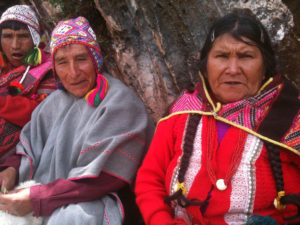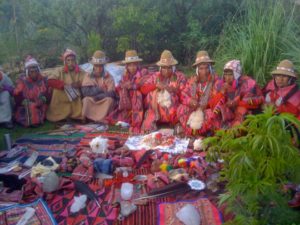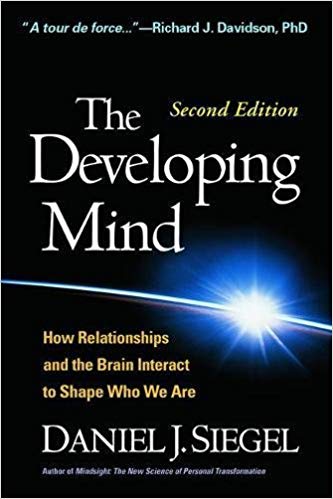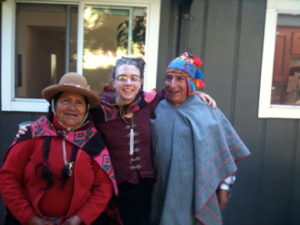Voices Of Wisdom: Birth, Relationships And Renewal From Peruvian Masters
“Anthropology gives us insights into how relational experiences and communication patterns within different cultures directly shape the development of the mind,” wrote Daniel J. Siegel in his book The Developing Mind: How Relationships and the Brain Interact to Shape Who We Are.
As a Western woman given the unique and rare opportunity of integrating with an indigenous family from the Q’ero tribe, I can sincerely attest to Siegel’s statement. Q’ero descend from their Inkan ancestors in the Peruvian Andes, where I lived between 2009 and 2011, and hold the special lineage of Inkan initiation. Their culture and traditions remained nearly in tact for many centuries after the Spanish Inquisition, a remarkable feat attributed to extra sensory guidance from their ancestors, lineage masters, and profound connection with Nature.

In his chapter that introduced the field of study known as Interpersonal Neurobiology, Siegel discussed how mind emerges from both the entire neural system as well as communication patterns in relationships. After reading, I began contemplating the importance of renewing interpersonal relationships in order to keep one’s neurological system fresh and evolving. Q’ero have several nature-based methods for doing so, including the exchange of coca leaves between family and friends, ceremony, and initiation. The key element is Nature.
Unfortunately, this element has been deficient in modern and technocratic societies. Yet forces of Nature alone birth our children no matter the extent of medical intervention used during labor. Ask any birthing person — the majority will undoubtedly be able to express a connection with all people who have birthed throughout time. The identity a birthing person may experience with the timeless lineage of all birthing people clearly illustrates a nature-based renewal process.
The communication patterns of Q’ero are in direct relationship with their environment. Every geographical feature, all plants and animals (humans included), and their Quechua language are composed of kawsay, translated as living energy. Kawsay is communicable through telepathy, sensory experience, and verbal exchange. As I underwent initiation in their lineage, kawsay pacha, translated as world of living energy, became accessible and at times directly experienceable.

Oftentimes during ceremony, I experienced kawsay as silk-like threads composed of fine winds, like an internal breath that calms and restores. I’ve felt these threads when bonding with infants. Kawsay appears to be formless, potential accessible through the lineage with many layers of subtlety. It is the initiate’s purpose to access unformed potential and birth it into being through the pathways laid out by their ancestors. By following in the footsteps of their ancestors, I felt very safe opening to the world of living energy.
Kawsay exists everywhere and at all times in various grades, from refined and subtle to dense and hard. For example, conflict between members of a community are characterized by density. There are special processes for establishing connections with refined kawsay that renew the relation between those in conflict. Without a renewal process, interpersonal relationships become evermore dense; that density is passed from one generation to the next.
Sound familiar? My mother birthed me at a hospital in Evanston, Illinois and requested an epidural without knowing the affects. When her bottom half went numb, she became anxiety and fear-stricken. She had relational tensions with my father, did not know the male ob-gyn on call, and had a lengthy history of abuse and neglect stemming from her own intrauterine experiences shaped by her alcoholic mother.
 In 1984, the year I was born, my own ancestors were in for a surprise! Perhaps it was orchestrated by benevolent angels seeking healing for my lineage (my mother’s side are Irish Catholic). However it came about, I was born through dense layers of perpetuated trauma and somehow retained some semblance of awareness. However, as I grew I gradually became disconnected and disillusioned without a sense of purpose. Like a time capsule waiting to be found, a book on Tibetan Buddhism made it into my hands at age 18 that sparked my renewal journey.
In 1984, the year I was born, my own ancestors were in for a surprise! Perhaps it was orchestrated by benevolent angels seeking healing for my lineage (my mother’s side are Irish Catholic). However it came about, I was born through dense layers of perpetuated trauma and somehow retained some semblance of awareness. However, as I grew I gradually became disconnected and disillusioned without a sense of purpose. Like a time capsule waiting to be found, a book on Tibetan Buddhism made it into my hands at age 18 that sparked my renewal journey.
Q’ero taught me that renewal occurs all the time, and that as human stewards of our environments, we have a responsibility to the organic process. It is our responsibility to ensure that renewal stays on track by birthing our future generations through sacred pathways laid out by our ancestors. Birth is a sacred and ceremonial act. With every birth there is an opportunity to sustain awareness of the naturally occurring renewal process. When parents are aware, bonding is strengthened and the newborn as well as the entire lineage benefits.
How is it possible to sustain awareness and renew our relations without time-tested cultural practices, especially in the case of pregnancy and parenting? In Western societies there is an immense amount of available information on cultural practices from around the globe. There are also highly developed fields of study that contribute theoretical frameworks and experiential methods of Western renewal processes. Below I list three simple and effective methods for renewal based on my experiences with the Peruvian wisdom tradition and my professional training in transpersonal psychology.
1) Immerse yourself in nature.
Begin this practice by establishing a threshold, literally a boundary that you create or imagine (for example, the space between two trees). Before crossing the threshold, set an intention and write it down. Decide on a length of time for your journey and set a timer, or don’t use a timer and follow your intuition. Take a few moments to center and ground yourself, then cross your threshold. Once you’re on the other side of your threshold, you’re in a transitory and liminal space. Explore your environment as you choose, noticing the reflections Nature offers you. At any point you may sit, walk, run, listen, smell, etc.. When your timer goes off, return to your threshold and cross from the opposite side in which you began. Journal, write poetry, or make art immediately afterward. If you choose not to use a timer, I encourage you to take a little more time for exploration after your initial sense of culmination. I’ve found that the extra amount of time often reveals some of my more profound insights. This can be done by yourself, with a partner or a group. Please be sure that you are in a familiar and safe place before embarking on a journey, where your threshold is easily accessible. Thanks to John Davis, Ph.D. for initiating me into this practice during my graduate studies at Naropa University.
2) Receive support and bodywork from a trained healer.
When I was traveling with my Q’ero family, I was conducting individual healings called mesa limpia (translated as cleansing). Today I offer Body-Centered Psychotherapy, an integration of craniosacral and regressive therapy. The body profoundly stores trauma – what Q’ero may consider density. Through gentle and non-invasive touch alongside skillful communication of emotional experience, whole body healing and transformation is achievable.
For anyone seeking renewal through bonding with their unborn, healing birth or ancestral trauma, or recalling perinatal experiences, I suggest finding a somatic therapist that specializes in pre- and perinatal psychology. Group processes focusing on the same are also available and include Dr. Ray Castellino’s Womb Surround, and Dr. Stanislav Grof and Christina Grof’s Holotropic Breathwork. Oftentimes professionals local to you may offer their own group support and bodywork processes. A benefit of group process is that you can attend with your partner, family, and friends. Thanks to the Association for Prenatal and Perinatal Psychology and Health and to Sandy Morningstar, M.A. for teaching me perinatal tools during my postgraduate studies.
3) Participate in a ceremony.
There is a fortuitous abundance of available cultural practices in Western communities including meditation, yoga, tai chi, and pranayama. Empowerments facilitated by

Buddhist lamas are readily available across the United States and other countries. Hindu saints travel around the world offering blessings. Indigenous and Native peoples make certain cultural practices available to non-native peoples. Revival movements in Judaism, Christianity and Druidry offer connection with the sacred through ceremony and ritual. Your own cultural background may already have a renewal practice. Many Westerners have co-opted traditional practices that may benefit you on a personal level, such as a Mother Blessing (formerly Blessingway, a Navajo tradition used by Westerners in place of a baby shower).
You may also find community new or full moon circles in your area. Use discernment in locating a ceremony by inquiring into the community and its practices beforehand – do an internet search and ask multiple people if there is a concern for safety. Thanks to don Humberto Quispe Soncco and doña Bernardina Apaza Flores of Q’eros for teaching me that happy and loving community nourishes, restores, and renews.
Q’ero taught me everything I know about Nature. They taught me that it is possible to change rigid structures in my mind into fluid communication patterns. I am truly humbled to be my own example of transformational power. May the practices and information mentioned in this article benefit you in your renewal journey.
Bibliography
Levee, S. (2015). A holotropic discourse: Andean mysticism and the transpersonal paradigm. Journal of Transpersonal Psychology, 47(1), 25-43.
Siegel, D. J. (2012). The developing mind: How relationships and the brain interact to shape who we are (2nd ed.). New York, NY: The Guilford Press.

